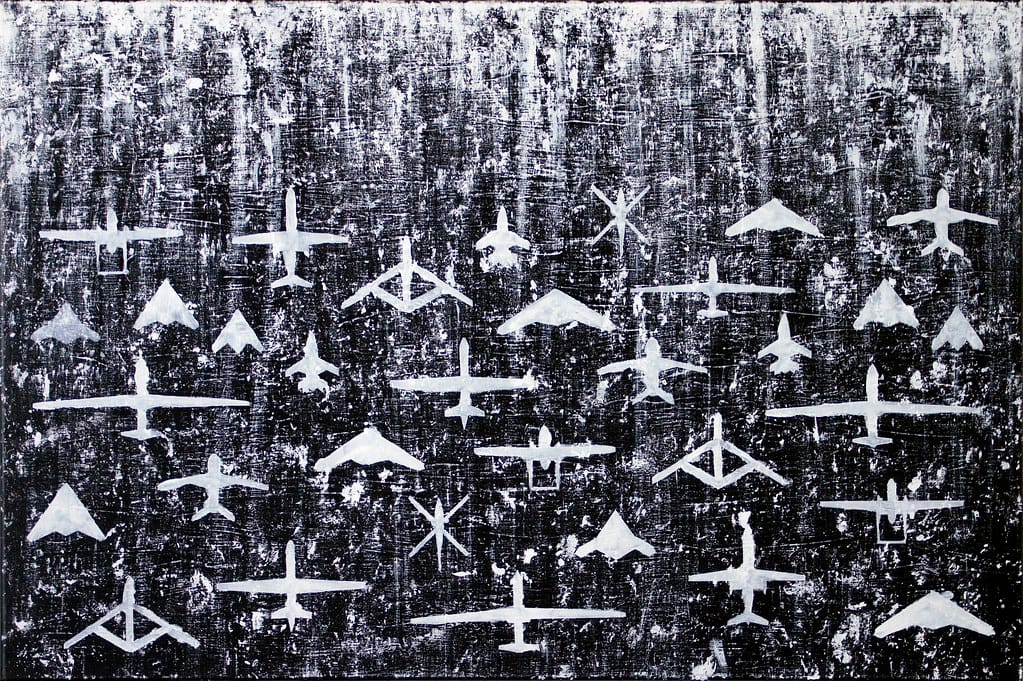The Drone Revolution: How Endless UAV Swarms Are Reshaping Ukraine's Battlefield
The war in Ukraine has transformed from a conflict of tanks and artillery into something resembling a deadly game of technological chess, where thousands of drones buzz overhead daily, fundamentally altering the nature of modern warfare. What began as isolated drone strikes has evolved into a relentless aerial ballet that has effectively frozen front lines across the 600-mile conflict zone.
The Numbers Tell the Story
Ukraine's military reports intercepting an average of 50-100 Russian drones each night, with some attacks involving over 200 unmanned aircraft simultaneously. This represents a dramatic escalation from the early days of the conflict when drone attacks were measured in dozens per week, not hundreds per day.
The sheer volume has created what military analysts describe as "drone saturation" – a point where the skies are so crowded with unmanned aircraft that traditional military movements become nearly impossible. Both sides now deploy everything from $500 commercial quadcopters modified with grenades to sophisticated $50,000 kamikaze drones capable of striking targets hundreds of miles away.
The Great Equalizer Effect
Perhaps most significantly, drones have democratized surveillance and strike capabilities on the battlefield. A single operator with a tablet can now monitor square kilometers of territory, identify enemy positions, and coordinate strikes with deadly precision. This has eliminated the traditional advantage of superior numbers or heavier equipment.
"Every vehicle, every troop movement, every supply convoy is now visible," explains Dr. Samuel Bendett, a drone warfare expert at the Center for Naval Analyses. "Both sides have adapted by moving primarily at night, in small groups, and with extensive camouflage – but even these tactics are becoming less effective as drone technology improves."
Innovation Born from Necessity
The constant drone threat has sparked remarkable battlefield innovations. Ukrainian forces have developed "drone nets" – networks of interconnected air defense systems that can track and intercept multiple targets simultaneously. Meanwhile, both sides have created specialized anti-drone weapons, from electronic jammers to modified shotguns loaded with specialized ammunition.
The conflict has also accelerated the development of artificial intelligence in warfare. Modern military drones can now operate semi-autonomously, using AI to identify targets, plan flight paths, and even make strike decisions with minimal human input. This technological leap has profound implications that extend far beyond Ukraine's borders.
Economic Warfare in the Skies
The financial mathematics of drone warfare heavily favor the attacker. A $1,000 drone can potentially destroy a $5 million tank, creating an unsustainable economic equation for defenders. This cost asymmetry has forced both sides to rethink their entire military procurement strategies.
Russia has reportedly shifted significant resources from traditional weapons production to drone manufacturing, establishing new facilities and partnerships with countries like Iran. Ukraine, meanwhile, has crowdfunded drone purchases through social media campaigns, with civilians directly funding military operations in unprecedented ways.
The Stalemate Effect
The omnipresence of drones has created what military historians compare to the trench warfare of World War I – a deadly equilibrium where neither side can gain significant ground without prohibitive losses. Large-scale armored advances have become virtually impossible when every movement is monitored and can be immediately countered.
This technological stalemate has profound implications for the war's trajectory. Traditional military doctrine emphasized rapid movement and concentrated force, but drone warfare rewards patience, dispersion, and technological sophistication over raw firepower.
Global Implications
The drone revolution in Ukraine is being closely studied by militaries worldwide. NATO countries are rapidly expanding their own drone programs, while nations like China and Iran are exporting increasingly sophisticated unmanned systems to allies and proxies.
The conflict has essentially become a real-world testing ground for next-generation warfare technologies, with lessons learned in Ukraine likely to influence military strategy for decades to come.
Looking Forward
As the war enters its third year, drone technology continues to evolve at breakneck speed. New developments in artificial intelligence, battery life, and manufacturing efficiency promise to make future drone swarms even more numerous and deadly.
The Ukrainian conflict has demonstrated that the age of drone warfare is not coming – it has arrived. The question now is not whether drones will reshape modern conflict, but how quickly military institutions can adapt to this new reality where the skies themselves have become the ultimate battlefield.
